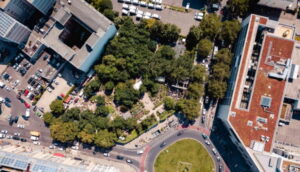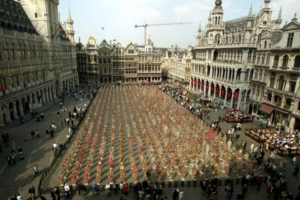
In 2009 a group of people from the district of Kreuzburg in Berlin, Germany came together to create a green space called Prinzenssinnengarten. The idea was originally to create mobile gardens that could be used across many rural lands. The founder of the project then realized a garden in the city would be much more beneficial. The garden took the place of a square in the town that had essentially became an urban wasteland. The community took it over, removed all of the trash, and created a communal garden. People who live there can go and plant things like vegetables or even just flowers. Since being created the community has added multiple beehives that help to pollinate all of the flowers and overall help to improve the biodiversity of the city.
This is such an important project because it positively effected the community in multiple ways. It creates a nice green space that people can go to spend time in. On top of that it is also a nice way for the community to come together while also benefiting from the food that is being planted there. There are really no negatives to creating urban agriculture like this because they only help to improve the quality of life in big and small cities.
More urban agriculture being introduced to big cities in the United States could be very beneficial to the status of climate change and the overall happiness of the community. Planting native plants will not only help to make cities more appealing but will also help to local ecosystem. Plants that are native will thrive better and make these garden much more beneficial. On top of that planting things like fruits and vegetables will help to benefit the communities as they will provide fresh produce that anyone who needs it can use.
To get something like this started in the United State communities need to come together to advocate. Working with local government can go a long way in helping with projects like this. With many people working together work can easily be done. Also, when people see projects like this thriving and benefiting the community they are more likely to also work to make these projects work in their own cities. Overall gardens like this in cities will help to improve biodiversity, a sense of community, and the environment overall in the United States.

